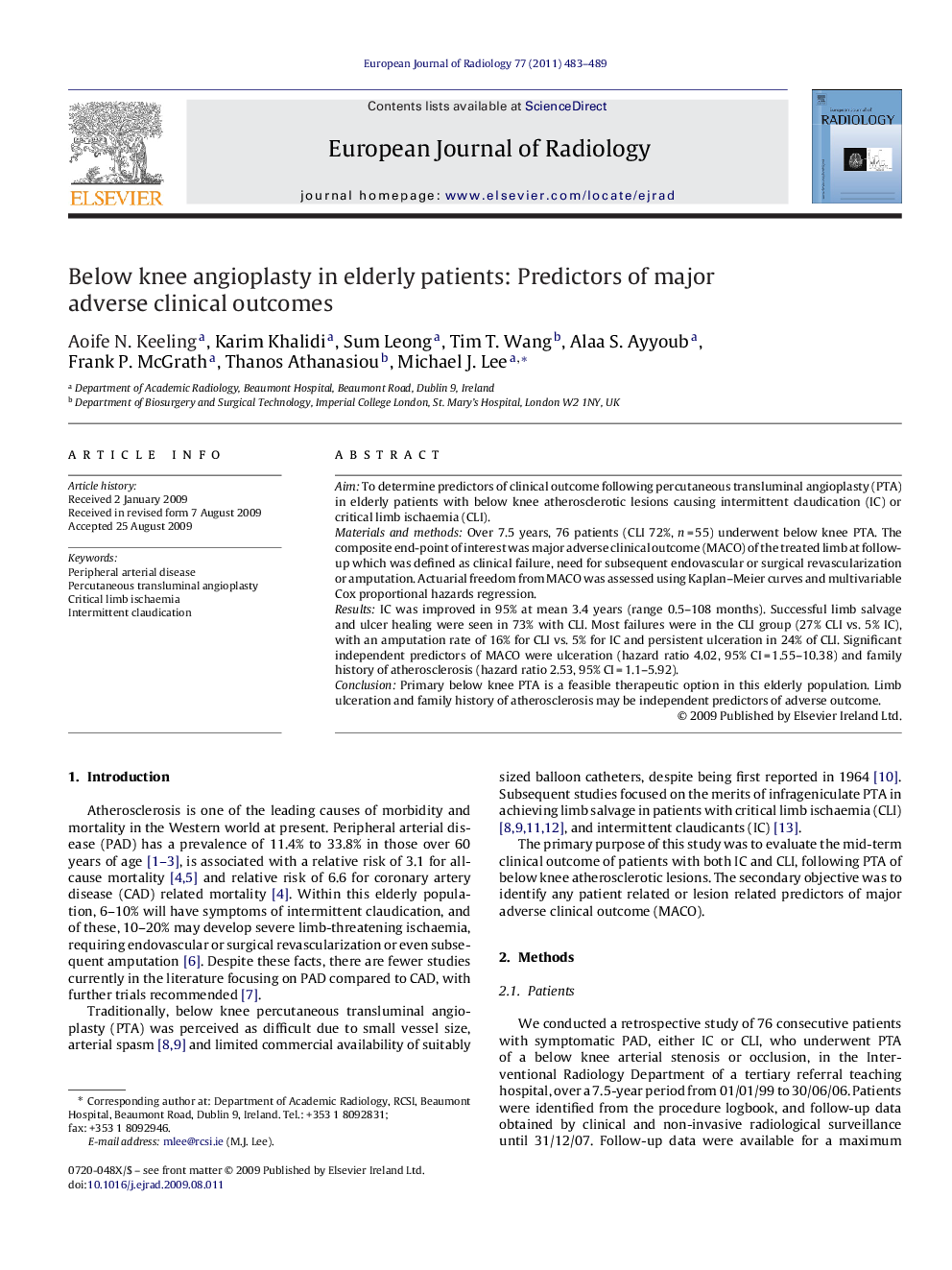| Article ID | Journal | Published Year | Pages | File Type |
|---|---|---|---|---|
| 4226352 | European Journal of Radiology | 2011 | 7 Pages |
AimTo determine predictors of clinical outcome following percutaneous transluminal angioplasty (PTA) in elderly patients with below knee atherosclerotic lesions causing intermittent claudication (IC) or critical limb ischaemia (CLI).Materials and methodsOver 7.5 years, 76 patients (CLI 72%, n = 55) underwent below knee PTA. The composite end-point of interest was major adverse clinical outcome (MACO) of the treated limb at follow-up which was defined as clinical failure, need for subsequent endovascular or surgical revascularization or amputation. Actuarial freedom from MACO was assessed using Kaplan–Meier curves and multivariable Cox proportional hazards regression.ResultsIC was improved in 95% at mean 3.4 years (range 0.5–108 months). Successful limb salvage and ulcer healing were seen in 73% with CLI. Most failures were in the CLI group (27% CLI vs. 5% IC), with an amputation rate of 16% for CLI vs. 5% for IC and persistent ulceration in 24% of CLI. Significant independent predictors of MACO were ulceration (hazard ratio 4.02, 95% CI = 1.55–10.38) and family history of atherosclerosis (hazard ratio 2.53, 95% CI = 1.1–5.92).ConclusionPrimary below knee PTA is a feasible therapeutic option in this elderly population. Limb ulceration and family history of atherosclerosis may be independent predictors of adverse outcome.
